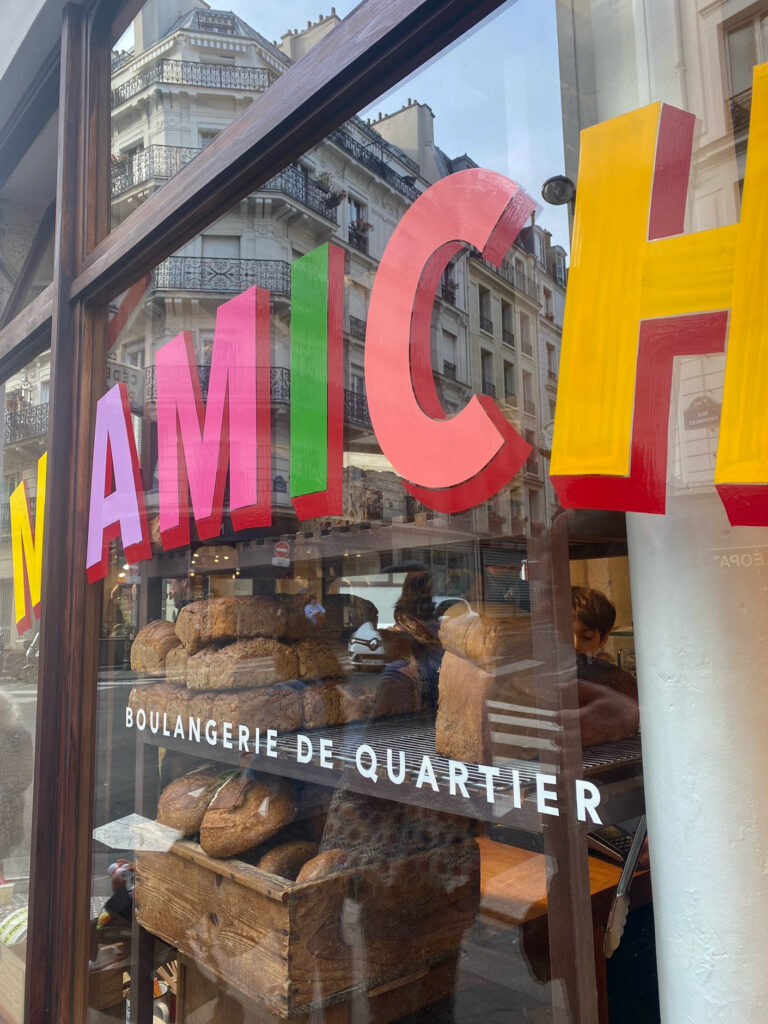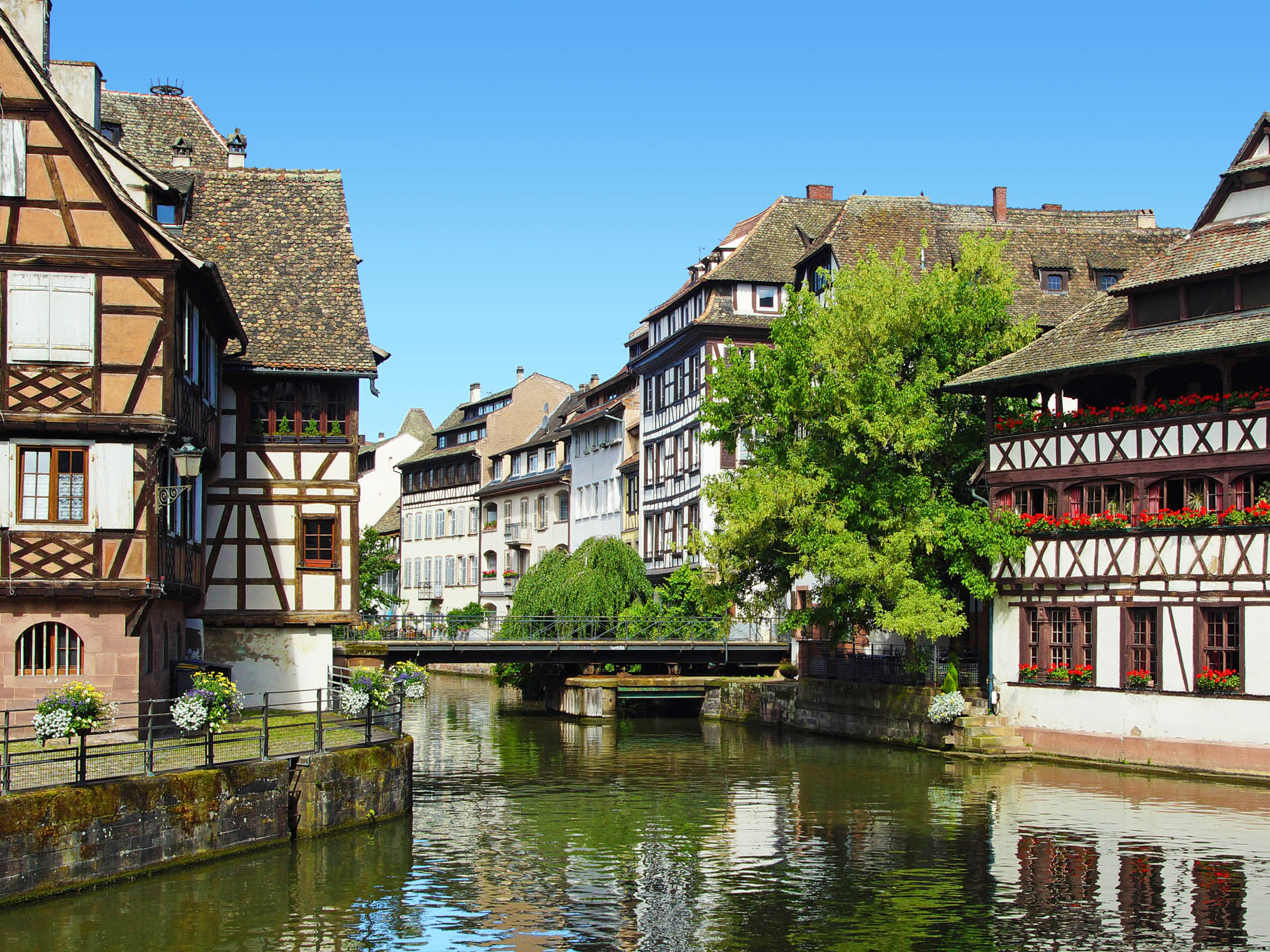I’m a big fan of food folklore and an even bigger fan of winding people up by regaling these tales as fact. Take, for example, the story of the birth of the croissant. In 1683, Vienna was under siege by the Turks. According to legend, a baker working late at night heard some unusual sounds underground and alerted the guard. It turned out to be an attempt by the Turkish to invade the city by tunnelling under the walls. The plot was thwarted, and the baker celebrated by making pastries shaped in the crescent symbol of Islam to commemorate the incident. The reality was probably less colourful and more tuberculosis-filled, but it’s dramatic nonetheless. The story continues with the arrival in Paris of Austrian boulanger, August Zang, who in 1839 brought with him the crescent-shaped Kipferl of his homeland and thus French viennoiserie was born.
Pinpointing the origins of anything food-related is tricky, but what’s not difficult to see is that boulangeries, regardless of how and when they appeared, have long been central to French culture. There are over 30,000 of them in Paris alone and it was only this year that the 1790 préfectoral decree mandating when boulangeries could open and close (to prevent any neighbourhood scarcity) was eased. Lockdown saw swathes of Parisians bulk-buying baguettes – some fifty at a time – and cramming them into their teeny freezers. This paradoxical image of a population known for its nonchalance now hoarding bread is as revealing as it is amusing. Boulangeries are sacred institutions and this makes me wonder how Parisians feel about the so-called nouvelles boulangeries that have popped up over the last five years. Defined, largely, by impressive Instagram followings, superfast wifi, and cronuts — how do they differ from old-school boulangeries? And, most importantly: is the food any good?
I used to dismiss the stereotype that the French are naturally conservative and wary of change (Hello? Revolution?), but then I moved here. The typecasting is true, certainly with regards to food: I always get a frisson of excitement when my dad visits and asks for his steak bien cuit that he’s going to get told off! Things are loosening up, though, and it’s fair to say that the culinary landscape in Paris is shifting. The city is embracing world foods and cooking techniques more readily than ever. Maybe this has something to do with the gradual coalescence between the city’s multifarious, multi-ethnic banlieues and the more homogenous central arrondissements – something Jonathan Nunn suggests Parisians have little choice in. Rental prices are going up, he notes, and with “fewer arrondissements left to colonise, the suburbs might have to become part of Paris” — even if many central Parisians view them with suspicion and fear. Indeed, it’s notable that even in the haut bourgeois sixteenth arrondissement there are now restaurants offering Moroccan and Lebanese food, and that the nowadays unadventurous St-Germain-des-Prés has recently produced a number of really great Indo-Chinese and Thai spots. The food may have been adjusted to accommodate French palates (mild tagines from Maghreb couscousieries in the fourth; modestly filled bánh mì in the thirteenth), but there’s a sense that Paris is slowly becoming more outward-looking.
for a city like Paris, so entrenched in cooking tradition and so bound by rules around food, it’s nice to see new spots quietly adding a bit more texture to the city
The growing use of social media as a vehicle to advertise food spots has also helped to anticipate the arrival of nouvelles boulangeries. Food related content on social media hadn’t really taken off in Paris as it had in other cities, but this changed after the pandemic. Faced with a national lockdown – and worse, limited access to bread, pastry, and fresh produce – home deliveries blossomed and shops and restaurants flocked to the ‘gram. A fine example was Circus Bakery (specialising in cinnamon buns and headed up by a handful of ex-pat Copenhagen bakers) who had great success with their ‘flying circus’, a bike service where you could have fresh cinnamon buns delivered to your door across eighteen arrondissements. The pandemic also gave rise to the ubiquitous food delivery apps establishing a foothold in the city, alongside more salubrious offers, such as Tiptoque, who deliver gourmet dishes by some of the city’s best chefs. There are other contributing factors, but these lockdown-enforced changes certainly created an atmosphere in which nouvelles boulangeries – with their slick branding, sumptuous-looking food pics, and ingredients from beyond France – could thrive.
Parisians are still Parisians, however, so nouvelles boulangeries can’t get away with serving undistinguished products. I visited three of the most famous: Liberté, Mamiche and Ten Belles Bread – to ‘investigate further’ (that is, gorge myself completely). Beyond assessing the quality of the bakes, I was also interested to discover what made these boulangeries so…nouvelle. I noted some common themes. The clientele in the three boulangeries was notably diverse: older French women and men with their trolleys, business people in suits, hipsters with cool hats – they were all there. All three were far more reasonably priced than I had anticipated (a Liberté baguette will set you back €1,40 and in the more traditional bakery around the corner it cost €1,20).
There was a handful of vegan options available in each of the shops (including a vegan charcoal baguette, slightly dry and, er, charcoaly, but otherwise palatable), though not as many as one might think (this is still France). Alternative milks were, however, readily available, as was conversation in English – my pallor and affected accent fooling nobody. Visually, each store strives to stand apart from traditional boulangeries, with lots of East London try-hard concrete and dim lighting. There were a couple of knock-out bakes showcasing flavours you wouldn’t really see in more traditional spots. I took home a tranche of brioche from Mamiche which, delicately flavoured with orange blossom water and loaded with salty butter, reminded me of Moroccan meskouta cake. Equally gorgeous was Liberté’s baby babka – rich with Valhrona chocolate and good halwa, and perfectly sized to cram into your mouth in one bite. Less surprising, perhaps, were a number of American / UK favourites: ‘les cheesecakes’, ‘les brownies’, and ‘les cookies’. Most of the counter space, however, was given over to more traditional viennoiserie and breads: madeleines, pain au chocolat, clafoutis, pain au raisin, financier, pain suisse — all present and correct. I tried the croissants at all three, and they were all better than average. Ten Belles Bread’s offering was truly exceptional, no notes.
It’s interesting, then, that while these boulangeries are ‘nouvelle’ insofar as they offer some less typical flavours and the trappings of hipster hangouts, they still share the same values as other (good) traditional boulangeries: a focus on quality ingredients, meticulous attention to detail, passion for their products – and lots of butter.
What is most revolutionary, in fact, lies behind the scenes. In Paris and in France generally, the cooking and baking world is dominated by men. While mothers and grand-mères helped put men like Zang and Louis XV’s pastry chef, Nicholas Stohrer, on the baking map by teaching them all of what they knew, it was women who were the 18th and 19th century geindres (groaners), tasked with arduous jobs such as weighing, cleaning and carrying. And they still do. Le Monde recently reported that the “vast majority” of women work the cash register, not the dough, in Paris boulangeries. For the most part, then, the sector is dominated by men, both commercially and artisanally. Yet, many, if not most, of the nouvelles boulangeries in Paris are run by and owned by women – Mamiche, Ten Belles Bread, Fou de Patisserie, Des Gâteaux et Du Pain: all are women-owned and led. It’s also notable, as journalist Lindsay Traumta points out, that it is women who are behind the most diverse bakes in the city centre. She cites Myriam Sabet’s Marais boutique, Maison Aleph, which specialises in gorgeous Syrian, Egyptian and Lebanese inspired bakes (the nids, inspired by the traditional Middle Eastern dessert, kunafeh, are phenomenal — generously soaked in fruity syrups and topped with flavoured mousse) and Sarah Amouyal who brought Jewish flavours and bakes to the forefront in her Pigalle spot, Babka Zana. Taiwanese-American, Jean Hwang Carrant, continues successfully to sell her perfectly baked cookies in the heart of Sentier. The gender dynamic of Paris’ culinary scene is far from being on a level-playing field, but it’s good to see that these less traditional boulangeries are being fronted by women.
So how do Parisians respond to the new bakeries? When the owners of The French Bastards were asked this, they said that they were “suspicious [of us] because we’re new; they’re grumpy, miserable, moody”. Ouch. I’m sure there’s some truth in this — on the surface, the Parisian default mood is pissed off (so, too, for Glaswegians – I would know), but deep down we really like our food and baked goods will always cheer us up. On the whole, Parisians have been accepting of the nouvelles boulangeries for three reasons. They’re familiar enough (i.e. they still smell and look like traditional bakeries, filled with familiar touchstones; the food meets the stringent expectations of French palates (and if it didn’t, people would simply not return) and, lastly, the less-than-traditional offerings pique Parisian culinary curiosity. These redeeming features allow the nouvelle spots to rub shoulders with the traditional bakeries fairly seamlessly. From most perspectives, the boulangers aren’t really pushing any boundaries, and it’s funny to consider oat milk and tahini flavoured babka as faintly subversive. However, for a city like Paris, so entrenched in cooking tradition and so bound by rules around food – it’s nice to see new spots quietly adding a bit more texture to the city.
Cover photo licensed by Adobe. All other photos by Rachel Naismith.
November 2022









